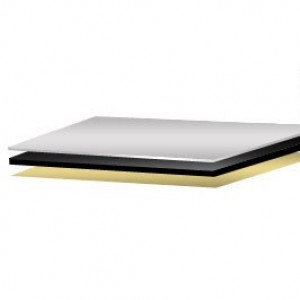| Ayegh Khodro Toos |

| Registration Date | 28 Oct 2020 |
| Revision Date | 28 Oct 2020 |
| Share |
Others Composites and Polymers
Automotive Sound DeadenerThis product consists of a viscoelastic polymer that is assembled on a hard aluminum. Polymer with hard metal is used as a unique compound to reduce noise and vibration in the temperature range of 5 to 40 °C. The viscoelastic layer reduces vibration by creating molecular stretches or heat generation. Unlike foreign product, this product is free of bitumen, lead and environmental harmful oils. To fabricate this product, a combination of polymers with different molecular mass was used to damp a variety of input frequencies. Good thermal stability, anti-shock Easy to apply No need for an oven to assemble Low relative weight compared to bitumen insulators High vibration absorption and up to 3 times higher than bitumen insulators
In the design and construction of cars, it is important to prevent the transmission of noise distributed from engine or body shake. In automotive applications, damping materials are generally placed on sheet metal panels exhibiting high vibration levels. The use of insulators such as foam, bitumen insulators, use of rubber sealant and insulation coatings are among the methods considered. Another method used to reduce noise and acoustic losses is using polymeric materials such as butyl on the floor and body of the car cab. These materials are highly resistant to moisture, heat, chemicals and extreme cold, and adhere well to steel and galvanized surfaces. Usually the sound insulation process starts from the doors, which not only reduces noise but also improves acoustics. In general, temperature, sound frequency and surface geometry influence the rate of noise reduction.